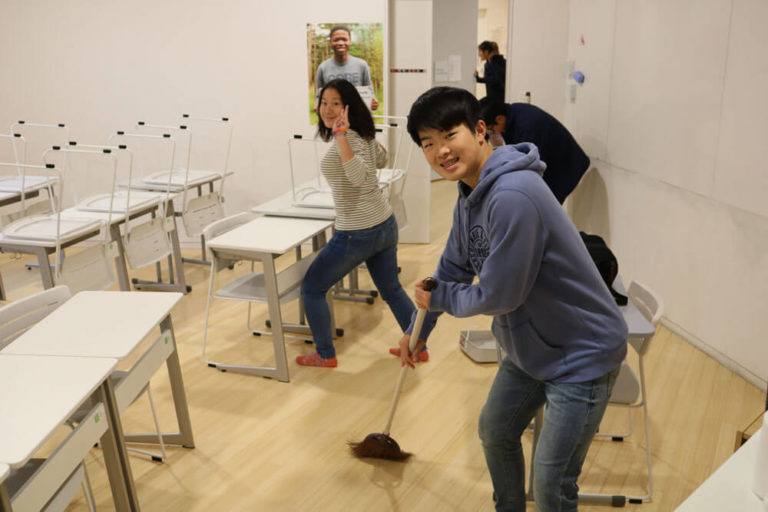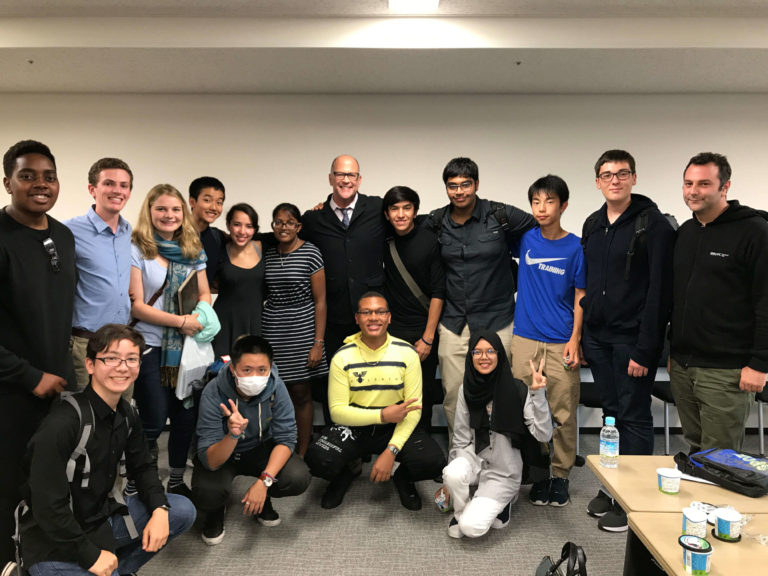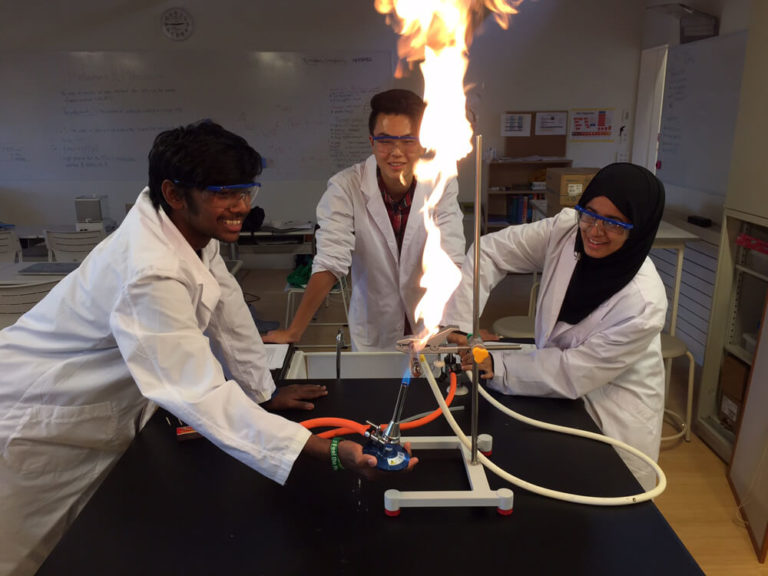 This post was contributed by ISAK’s English department chair, Mr. Simone Sgarbossa. Mr. Sgarbossa teaches ToK and G-10 / IB English for non-native English speakers; he been involved in the United World Colleges (UWC) movement for the past 17 years. This is Mr. Sgarbossa’s second year teaching at ISAK.
This post was contributed by ISAK’s English department chair, Mr. Simone Sgarbossa. Mr. Sgarbossa teaches ToK and G-10 / IB English for non-native English speakers; he been involved in the United World Colleges (UWC) movement for the past 17 years. This is Mr. Sgarbossa’s second year teaching at ISAK.
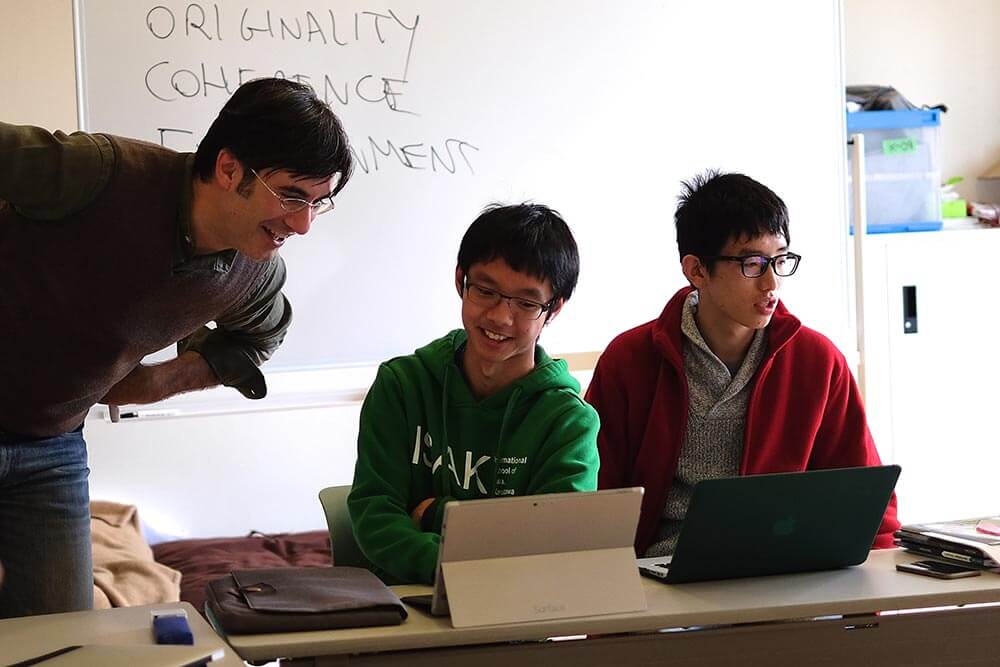 Much more than a short story
Much more than a short story
Today we take on the short story “Parson’s Pleasure” written by one of the master storytellers of our time, Roald Dahl.
We read the story out loud in class. From the start, students get told that it is not only about getting the pronunciation right. Other things matter too: posture while reading, enunciation, expression. Keeping your classmates involved, making sure you are reaching all of them. Reading at a pace that is not too fast or too slow. Quite a challenge, especially when reading at first sight. But I remind them that their attitude as readers today is going to be their attitude tomorrow, while they are sitting through their university and job interviews. Reading aloud creates a shared experience. It creates community. We try to create a supportive environment: we are not there to catch each other out, but to take risks, make mistakes, offer constructive feedback, and strive for excellence.
I pre-teach a few challenging or unusual words and expressions, and off they go. Students are not told when to start and stop reading: they learn to listen, to “feel” their classmates, so they are free to stop at any time, and someone else is ready to pick up from where they left. So this is not only about reading, it is very much also about listening.
At the end of the reading, we do a little comprehension check: Roald Dahls’ stories are full of cunning twists and turns, and missing out on a small detail might mean missing out on the point of the whole story. Students share their opinions on the moral of the story, and they are called to express what they feel about the characters. In this way the story comes to life, and they enter the reality of this fictional world.
And here comes the real task. Students are divided in groups of three: they have to add a final scene of the story. They have to come up with a dialogue, props, and stage directions. And they have to perform their own scene in front of everyone else. The scene must be original, coherent and entertaining.
In the first place, this task is about teamwork. I find fascinating how cultural approaches to team work vary greatly amongst the members of the same class. Students from certain cultures are much more inclined and equipped to work as a team. For others this is a bit of a challenge, which makes this practice even more valuable. The students work together, chat, interact, brainstorm, try out ideas. At this stage, my role is that of a facilitator. I move around from group to group, listening, taking notes, monitoring and offering some advice. I encourage the students to use their creativity, to write something original: I am often amazed by the diversity reflected in their work.
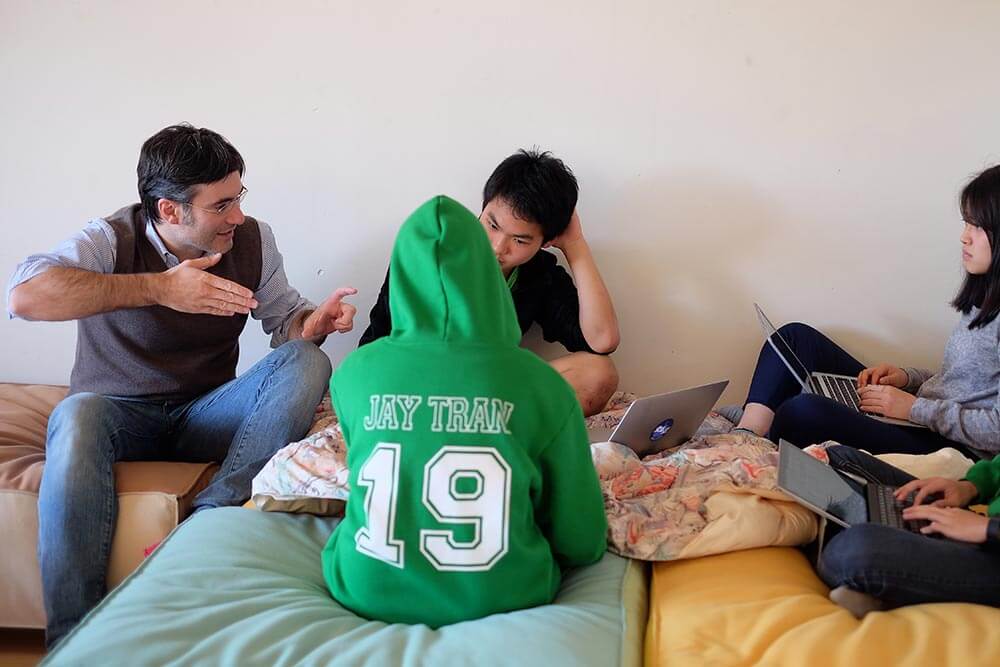 I invite them to build a story that is coherent: it just has to make sense, to fit as one more gear in the Dahl’s concise, effective machine. And this is not only about the plot: style and tone, and vocabulary come into play. Students are challenged to find the right words and actions for each character. In order to do this, they must focus very attentively on the original text.
I invite them to build a story that is coherent: it just has to make sense, to fit as one more gear in the Dahl’s concise, effective machine. And this is not only about the plot: style and tone, and vocabulary come into play. Students are challenged to find the right words and actions for each character. In order to do this, they must focus very attentively on the original text.
Eventually, I tell my students to write with their audience in mind: the final output of this work is a little performance, which should be convincing and entertaining.
If the work is not completed during class time, it becomes a piece of homework. Students meet up after class to work on their skit. Or they work remotely: students at ISAK are all equipped with electronic devices and they are encouraged to make use of them to enhance their performances. A simple shared digital document becomes a space for creating a collective piece while working sometimes after curfew from difference residences.
And finally the morning of the performance comes. It’s first period, which is a bit of a challenge when you want to set up a performance. We start off with a three-minute mindfulness meditation: this is about focusing on the moment, being aware of your sensations and thoughts and letting them go. This helps the actors to focus.
The students know they will have to cast a vote for the best team in terms of originality, coherence and audience entertainment.
The groups perform their skits one after the other. Each story is different. Some have learnt their piece by heart (an extra effort that will be rewarded), some bring simple but very effective props onto the improvised stage. Others make a conscious and successful attempt to recreate the speech and manners of the characters. Some are challenged by their own positioning on the stage. Some students are shy, their voices almost lost –there is more work to do on this. Others display exceptional energy.
After the performances, all students get to cast their votes for originality, coherence, and audience entertainment. They can also vote for their own group, but from the quick ballot, some clear winners emerge. And they are rewarded with some small (edible) prizes.

Then it’s “debriefing time”: together we analyze the performances, understanding why some teams were more effective then others, for each of the criteria considered. And we look at the language – vocabulary and grammar. This is the springboard from some grammar work over the next lessons. Students offer each other feedback. They learn to give constructive and empathic criticism, while taking responsibility for their own comments (it’s “I think, I find that” as opposed to “you should have”).
To gather further evidence of the students’ achievement I propose a formative assessment task for homework: they are asked to write down two things they learnt and two they enjoyed about the process.
Reading and comprehension skills, public speaking and creativity, writing, offering empathic feedback, and team-work are just some of the aspects the students get to practice through this work. Most importantly, they get to step out of their comfort zone to perform their own creative piece in front of their peers. All this, in a fun and supportive environment. Much more than just reading a short story.
__________________________________
What did students enjoy the most about the activity involving the group completion and acting out of the ending of Parson’s Pleasure? Here are a few of their answers:
I enjoyed watching other’s performances to see their thoughts on how the story might end. It excited me as the outcome was different than what I expected.
-Neo
I enjoyed the process of creating the most through this activity. I had never experienced to create or expand the plot with other students, and the process was very interesting to me. Though the plot did not turn out the best, I think it was great experience.
-Futatsu
I enjoyed making the dialogue the most. Even though we could not finish in the class and we had to meet during our free time, it was fun to have a conversation with people who I do not meet except classes usually. In addition, I really enjoyed watching other people playing their dialogues as well because it is really interesting to see how different plot we came up with from the same short story.
– Ayana
